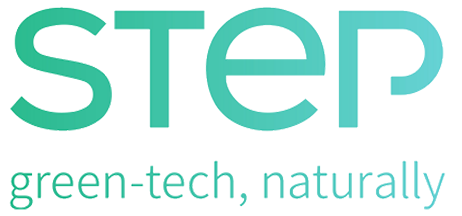
- Insight
- June 26, 2024
The CO2 Abatement Potential: Innovative Projects of STEP Ltd. to 2023
STEP’s mission is to cut down 5 million tons of CO2 equivalent by 2035 through the implementation of innovative decarbonization projects with Italian industrial companies. Our daily commitment to finding green-tech solutions is represented by our guiding number, “5 million.”
Consequently, it is a priority for us to communicate where we are in the mission by presenting data on the abatement potential of 2023 projects.
Projects to 2023: Composition and Purpose
By the end of 2023, there are 11 STEP projects under implementation, divided into the following categories:
Strategy (Workshop)
: 3 projects
Decarbonization (STEP2ZERO)
: 7 projects
Open Innovation (STEP4SOLUTIONS)
: 1 project
For the purpose of measuring the tons ofCO2eqabated, the projects that can be included in the calculation are exclusively those that fall under the “Decarbonization” category, i.e., projects that aim to work on the company’s production process with the goal of reducing environmental impact.
“Strategy” projects, that is, those that aim to identify, plan and develop a sustainability strategy, remain excluded from the calculation due to their nature. However, this type of project is extremely relevant to us because it lays the foundation for reflection within the company and future action.
“Open Innovation” projects, that is, those that aim to develop new products, machinery, services and processes, are excluded due to their complexity. The long-term development and uncertainty of the outcome does not allow us to estimate the environmental impact, which will be evaluated only at the end of the project along with the development of a measurement and calculation methodology.
Decarbonization Projects and the estimated abatement
The sum of the estimated abatement potential of the 7 decarbonization projects ranges from 18,000 to 21,000 tons of CO2eq. Below is a table summarizing the abatement potential of 2023 projects.
Table 2- Abatement potential by project
|
Company |
Sector |
Type of intervention |
Abatement potential (tonCO2eq) |
|
Company 1 |
Rubber and plastic |
Efficiency |
254 – 315 |
|
Company 2 |
Food |
Process |
1.500-2.300 |
|
Company 3 |
Textile |
Process |
13.300 |
|
Company 4 |
Food |
Efficiency |
190 |
|
Company 5 |
Metallurgical |
Efficiency |
380 |
|
Company 6 |
Food |
Efficiency |
265 |
|
Company 7 |
Textile |
Efficiency |
2.050-5.400 |
|
Company 8 |
Food |
Efficiency |
1.500-2.100 |
|
Company 9 |
Pharmaceutical |
Efficiency |
1.700-2.600 |
|
21.150 – 26.850 |
*Company names are not listed in the table due to the innovative nature of the project and to protect the client company until the completion of each phase of the project. Some of the names can be seen from our website, while more precise details about each individual project will be published when the implementation phase and related measurement of results are completed.
The calculation was made by considering the abatement potential of each individual project, that is, the emissions that would be potentially reduced by implementing all the innovative technologies proposed by STEP to the client company.
Why do we talk about estimating abatement potential?
The service
STEP2ZERO
starts from data collection and business process mapping to identify energy efficiency interventions and business process innovation, aiming at reducing environmental impact and business competitiveness.
To understand the choice of communicating the estimated abatement potential, we need to delve into three elements:
Timing of projects
A decarbonization journey has a duration that varies from company to company based on variables such as the presence of a data monitoring system, administrative and executive organization, budget approval process, and project complexity.
On average, we can consider a duration of 6 to 24 months. The 7 projects considered in the calculation have been contracted between the second half of 2022 and 2023 and are being implemented. Of the 7 projects: 5 are under development, while 2 are under execution with a projected abatement of 1,400 tons of CO2eq.
Integration of technologies
STEP’s projects are based on the integration of a
mix of technologies
built based on the needs of the company and covering one or more of STEP’s research areas, namely:
- Innovative renewables
- Energy efficiency
- Circular Economy
- Alternative fuels
- Innovative process technologies
Each technology uses different systems and models to calculate the potential outcome. Upon completion of the implementation phases, we will develop a uniform methodology for the actual calculation of CO2eq.
Economic sustainability
All STEP projects are built to provide the client company with the mix of technologies that maximizes decarbonization potential and economic performance. The economic sustainability of the project allows us to increase the probability of execution of the developed plan.
Calculation Methodology
The calculation of abatement potential is a complex process that considers the interaction of multiple variables, which may vary depending on the technology used and the specific needs of the client company. For each project, the impact on all scope 1, 2 and 3 emissions is assessed, involving:
- kWh of electricity saved
- Cubic meters of gas avoided
- Kg of raw materials
- Kg of waste
- Liters of other fuels
These data are multiplied by the emission factors established by law, with a careful balancing of positive and negative impacts. Whenever possible, STEP relies on certified data, as in the case of the next-generation Power Stabilization technology, equipped with an algorithm for calculating energy savings certified byENEA. In the absence of specific data, we opt for a calculation based on industry averages.
Future goals
Upon completion of the implementation phases, the evolution of the calculator will focus on developing a uniform methodology for reporting actual emission abatement for all STEP projects and in third-party certification of that abatement.

